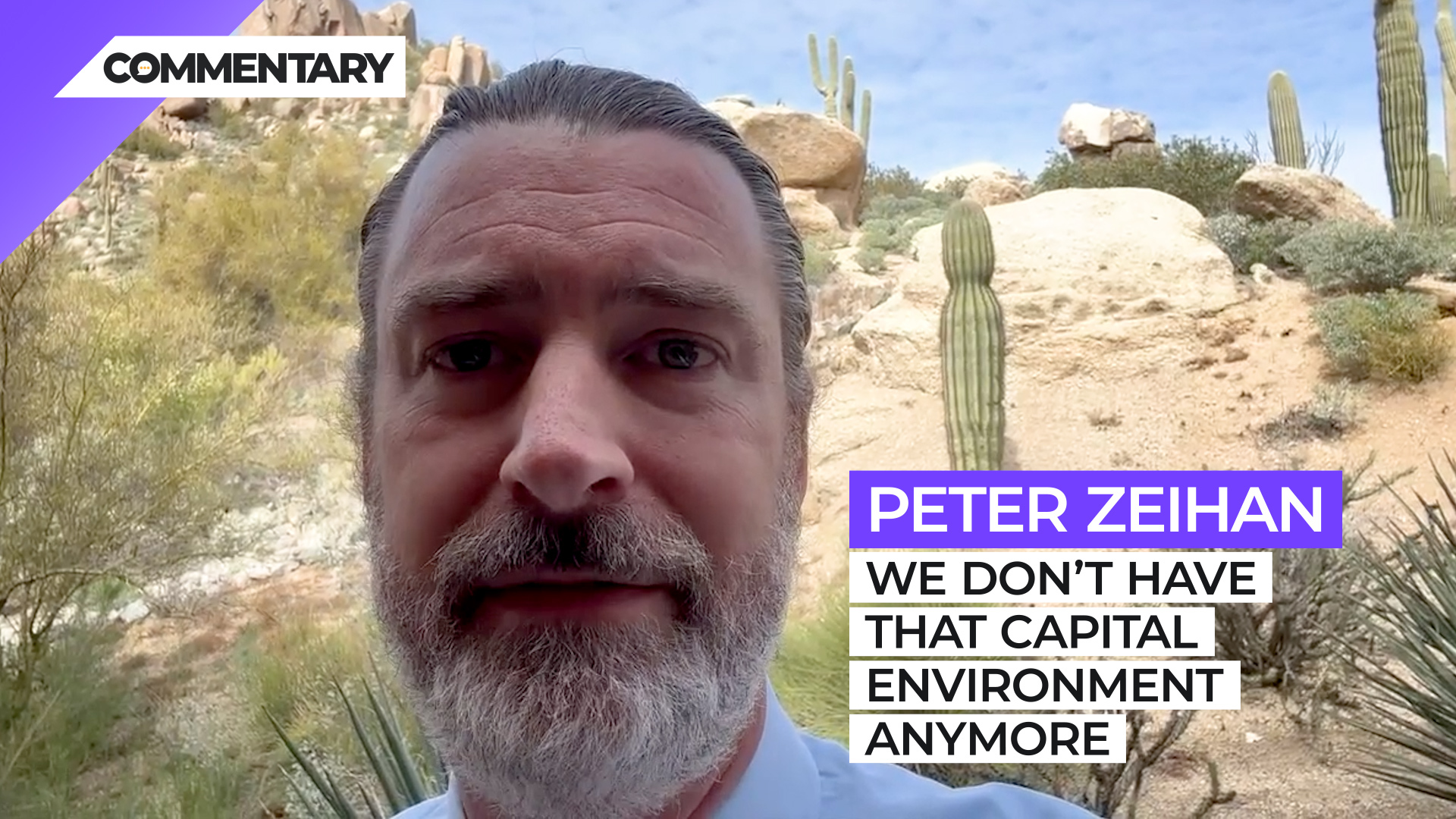
Commentary
-
Our commentary partners will help you reach your own conclusions on complex topics.
Hey everyone, Peter design here coming to you from Phoenix, a city so artificial, it makes Vegas look like a nature preserve. I just want to spend a couple minutes real quick talking about actually answering a question that a lot of you have sent in. And that is in a world where we’re in deep demographic decline. And we’re facing the loss of consumption across the board and the dislocations that come to that for economics and trade. Can automation help solve some of these problems? So first, the backdrop, the birth rates started dropping precipitously in the industrial era, and then really doubling down at the end of World War Two when the Americans created globalization and then tripling down in the 1990s, when a lot of what had not been part of the global system. Your China’s your Russia is your Brazil’s joined in, everyone started industrializing and urbanizing. And birth rates went just just plummeted through the floor, until we got to the point where we are today in places in China and Korea, where birth rates are births per woman are now below point seven, and 2.1 is the replacement level. You play that forward for decades, and how we’re running out of people to have countries in the not too distant future. You know, historically speaking, now, the picture is different country by country. But it does raise the question and this is a good one, whether automation can help us with the workforce? And the answer is probably not and the short version, the longer version is you need two things. In order to maintain a trading network and economics as we understand them. The first one is consumption. Theoretically, automation can help with the production side of the equation, but machines don’t consume. So there’s no reason to expect a broad automation push is actually going to solve that unless you’re part of a system where there already is consumption. So in places like the United States and Mexico where birth rates are still reasonably high, and we’re not facing the kind of crash we’re seeing in Italy, or Germany, or Belgium, or the Netherlands, or Greece, or Spain or Brazil, or China or Korea or Japan or you get the idea. You know, it might work. So in those systems that are already the most sustainable automation can absolutely be part of the solution. But the second broader problem is capital. As you retire, you liquidate your investments and you go into T bills in cash, because if there’s a currency crash or a market crash, you’re you’re just out of luck. Well, that speculative capital back when you were investing in stocks and bonds, that’s what drives the tech sector. A successful tech sector requires not just loads of 20 and 30 somethings to do the work people we don’t have anymore, but a lot of capital to pay them for years before their investments actually bear fruit. And only then do you also need capital in order to pay for the prototyping and the operationalization and the build out and ultimately, the maintenance of all these systems. And we don’t have that capital environment anymore, either. So they’re just very few places in the world where tech in general in automation in specific can actually part be part of the solution. We’re gonna have to figure out different ways of doing things and for most of the world, that means doing less. All right, that’s it for me. Next up, perhaps Vegas
-
Can other nations replicate success of US shale revolution?
The “shale revolution” has provided the United States with a bountiful domestic supply of oil. But extracting oil from shale is a highly technical process, and it is also dependent on specific geological formations. Straight Arrow News contributor Peter Zeihan tackles the question of whether or not other nations might be able to replicate the…
-
Peace between Israel and Iran, at least for now
A series of recent airstrikes between Israel and Iran inflamed fears of a wider regional war erupting in the Middle East. That concern now seems to have paid off, after third-party countries around the world successfully intervened and talked down military hardliners in both Israel and Iran in order to avoid such an outcome. Israel’s…
-
Global internet in a precarious state, but that could be a positive
Over 500 underwater cables span over 870,000 miles worldwide, serving as the foundation of the modern global internet. Despite their critical role in facilitating communication, these cables often go unnoticed, even as the amount of data transmitted through them has surged. So what happens if the cables fail? Straight Arrow News contributor Peter Zeihan contends…
-
Water wars are an unlikely future
Foreign policy writers have long warned of the possibility that clean drinking water might become “the next oil” — that is, that major wars might be fought around the globe over access to potable water. With expanding populations and finite water supplies, these critics argue that humans will inevitably fight each other to secure drinking…
-
Are Russia’s hypersonic missiles too good to be true?
Russia has reportedly used five of its new hypersonic Zircon missiles to target Kyiv since the beginning of 2024. Russia claims that these sea-based missiles, boasting a range of 625 miles and capable of traveling at nine times the speed of sound, are part of its family of “superweapons” aimed at penetrating the U.S. missile…
Latest Stories
-
 Getty Images
Getty Images
FTC votes to ban non-compete clauses
-
 Reuters
Reuters
Tennessee legislators pass bill allowing teachers to carry guns in classroom
-
 Getty Images
Getty Images
Senate passes $95B aid package; TikTok bill included
-
 Machina Labs
Machina Labs
Robotic craftsman provides solution for aging military systems needing repairs
-
 Boeing
Boeing
Machina Labs tackles military challenges with new tech: Weapons and Warfare
Popular Opinions
-
In addition to the facts, we believe it’s vital to hear perspectives from all sides of the political spectrum.
Latest Opinions
In addition to the facts, we believe it’s vital to hear perspectives from all sides of the political spectrum. We hope these different voices will help you reach your own conclusions.
The opinions published in this section are solely those of the contributors and do not reflect the views of Straight Arrow News.

















Latest Commentary
We know it is important to hear from a diverse range of observers on the complex topics we face and believe our commentary partners will help you reach your own conclusions.
The commentaries published in this section are solely those of the contributors and do not reflect the views of Straight Arrow News.
Peter Zeihan
Geopolitical StrategistPeace between Israel and Iran, at least for now
Global internet in a precarious state, but that could be a positive
Water wars are an unlikely future
Dr. Frank Luntz
Pollster and Political Analyst‘Take the job seriously’: Why Americans are fed up with Congress
‘If we can shrink it, it will stop growing’: Americans talk debt, deficit
‘I don’t think they care’: Undecided voters explain their reasons
Pete Ricketts
U.S. Senator for Nebraska